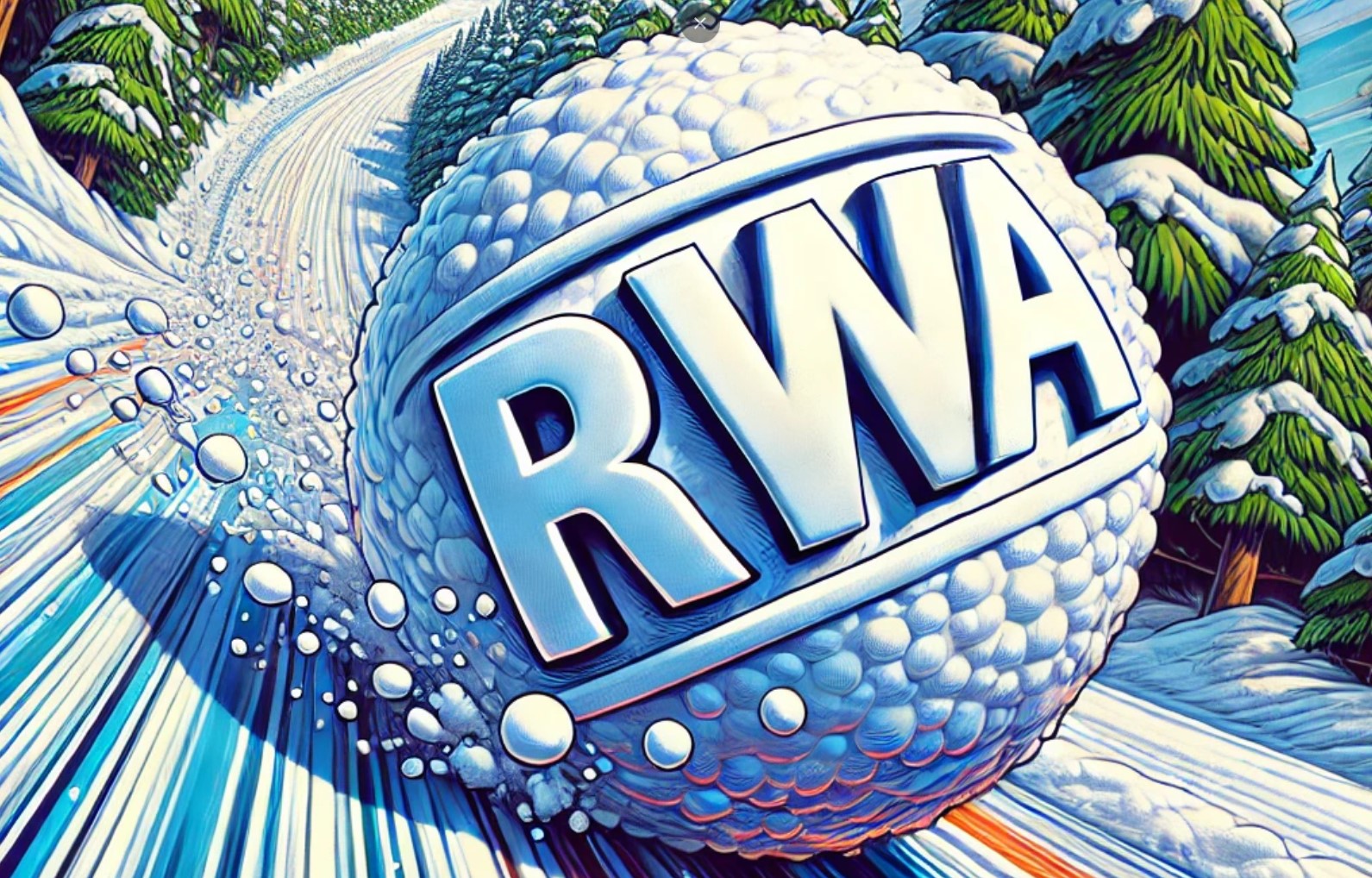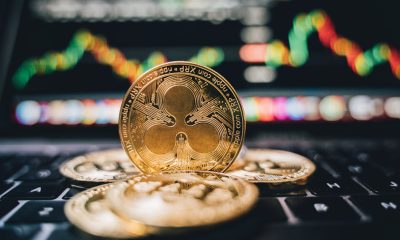Crypto
Blackrock Just Launched the RWA Tokenization Snowball. Here’s How to Profit With SurancePlus [NASDAQ: OXBR]
Heads up, the runaway RWA tokenization snowball just gathered a boatload of momentum now that Bloomberg’s just dropping the latest news in Blackrock’s $10 trillion RWA story after the giant snapped up a bunch of the first Muni Bonds to ever be issued on the blockchain. Here’s what this means for RWA tokenization, and how investors can take advantage of it with Oxbride Re’s SurancePlus.

Ever heard of the snowball effect?
You know — little snowball starts rolling down a hill. It picks up more and more snow. Gets bigger. Goes faster.
The cycle repeats over and over.
And eventually, we’re left with an effing monster of a snowball that swallows everything in its path.
Now replace “snowball” with “RWA tokenization”, and you should hopefully get an idea of what’s about to happen on the back of this bombshell of a news drop from Blackrock [NYSE: BLK].
Let me explain why.
Blackrock’s $10 Trillion RWA Tokenization Commitment Just Got Serious
By now, Blackrock’s $10 trillion commitment to RWA tokenization isn’t exactly a secret. It’s been on their agenda for a couple of years now.
But this year is when things started getting really serious.
Now, we’ll get to the latest news in a minute. But first, let’s back up a few months. Specifically, let’s go back to March, when Blackrock launched its “BlackRock USD Institutional Digital Liquidity Fund”, or “BUIDL” for those of us with an aversion to names with double-digit syllable counts.
Interestingly, that all happened at about the same time when the velocity of capital inflows into RWA assets took a noticeable uptick.
Coincidence? I don’t think so.
So, now let’s fast-forward to the present day — Bloomberg just dropped this banger.
The headline: BlackRock ETF Buys First Muni Bonds Issued Through Blockchain.
Now, let’s decrypt that headline a little bit, starting with the “Muni Bonds” bit.
WTF’s a Muni Bond?
Well, the technical definition that I just stole from Investopedia is “a type of debt security issued by local, county, and state governments.”
But I reckon that definition’s kinda like the extended version of “BUIDL” — it’s a bit of a mouthful. So let’s get back to fundamentals and go with something simpler.
I’m thinking RWA, as in Real-World Asset.
Think about it — at a fundamental level, a Muni Bond is basically just an asset that lives in the real world.
And the best part is, with our RWA definition, we can now scrap the whole “issued through blockchain” bit, and just replace it with “tokens”.
Now the headline simplifies to this: “Blackrock buys RWA tokens”.
See where this is going now?
Here, let me spell it out.
- Blackrock commits $10 trillion to RWA tokenization, and capital inflows into RWAs tick up.
- Blackrock launches the “BUIDL” fund, and capital inflows into RWAs tick up again.
- Bloomberg breaks the news that Blackrock bought a bunch of RWA tokens… and… well, I think you can guess what’s coming next.
And just like that, we have something resembling the snowball effect taking place with RWA tokenization.
So, do you wanna take advantage of this and make some money?
Me too!
Let me show you how.
RWA Tokenization Plays For the Common Man
For the time being, most RWA tokenization opportunities are pretty much limited to big-money players like Blackrock. If you don’t believe me, go knock on the door of your local town hall and tell ‘em you wanna buy some Muni Bonds on the blockchain.
Good luck with that.
And besides — just ‘cause you stick something boring on the blockchain, it doesn’t make that thing any less boring. And, let’s be frank, Muni Bonds are kinda boring.
But here’s something that’s not boring — buying shares in an active issuer of RWA tokens. Given what’s happening right now, that’s a pretty surefire path to some ginormous gains.
How ginormous?
Think of it like this — RWA tokenization issuers are probably gonna profit about as hard as CDO issuers did back in the pre-GFC days. Just, without the crash at the end, or any of the moral hangups some of us might have about pawning off toxic debt dressed up in a frock to the next greatest fool.
After all, we’re talking about real-world assets here. All RWA tokenization is doing is eliminating all the lawyers and paperwork and the general mess of transacting real-world assets. You know, making life simpler and cheaper.
Here’s an example — real estate. Mountains of paperwork. Hours of lawyers. Money bags worth of transfer taxes.
Now what happens if you stick that property on the blockchain?
Once the initial transfer is done, buying and selling tokens in that property becomes about as painful and expensive as buying and selling Bitcoin. So you can bet that whoever captures that market is gonna make a lot of money.
So now the only question now is, how do we proceed? Who’s capturing big chunks of our markets with their RWA tokenization plays? And who should we buy shares in?
If your answer to the above is “Blackrock [NYSE: BLK]”, then I hate to break it to you, but that’s the wrong answer.
Sure, Blackrock will do some very big things here — they’re committing $10 trillion to RWA tokenization, after all.
But, for a while at least, that would kinda be like buying shares in Google [NASDAQ: GOOG] because you wanted to make some real estate bets in Mountain View, California.
Yeah, Google does own a bunch of land there. But the value of that land is such a small part of their total business that it’s pretty much irrelevant.
The same logic applies to buying Blackrock [NYSE: BLK] shares. For now, RWA tokenization’s “merely” a multi-billion dollar market, whereas Blackrock has multi-tillions worth of assets under management.
So let me show you a real, almost pure-play RWA tokenization play that’s ready to pop right now.
Meet Oxbridge Re and SurancePlus — The Only True RWA Tokenization Play (For Now)
I’ve spilled enough words by now. So let’s cut straight to the chase.
The only real RWA tokenization play in the public markets right now is Oxbridge Re [NASDAQ: OXBR].
So, what makes this “boring” little reinsurance company a real RWA tokenization play?
The answer, of course, is SurancePlus.
For those late to the party, SurancePlus is the RWA tokenization subsidiary of Oxbridge Re. And, pretty fast, it’s becoming a dominant part of their business.
If you want proof, go take a look at the fair market valuation we did on SurancePlus not long ago. Long story short, SurancePlus alone is worth more than Oxbridge’s entire market cap.
And yes, I’m so serious about that last statement that I’m gonna repeat it again.
SurancePlus alone is worth more than Oxbridge’s entire market cap.
[PS: As for how that’s possible, we also covered that in the same SurancePlus valuation analysis we did.]
Now, as for what SurancePlus actually does, that’s pretty simple to explain. So simple, that I reckon I can do it with bullet points:
- SurancePlus issues tokenized reinsurance securities.
- Investors buy a stake in these tokenized reinsurance securities.
- In return, SurancePlus takes a small cut of the investor’s future profits.
Now, at first glance, this arrangement seems suboptimal. After all, shouldn’t Oxbridge just keep the reinsurance contracts for itself? That way, it can take all the profit.
Well, Oxbridge probably would do this if it could.
But reinsurance can be a bit of a bummer. Basically, Oxbridge’s capacity to write reinsurance contracts is capital- slash asset-constrained. If it writes up a trillion dollars worth of reinsurance contracts and suddenly suffers a “major claims event”, Oxbridge Re would go bankrupt.
So, how do you solve that problem?
That’s where outside investors come in.
By setting up SurancePlus and issuing tokenized reinsurance contracts, Oxbridge Re’s only constraint to growing its business is its capacity to find investors keen to make a 40-50% annualized ROI. (Yeah, reinsurance is that profitable.)
And, by taking a cut of those profits, SurancePlus basically turned itself into a money-printing machine.
A money printing machine that’s gonna go into hyperdrive as the RWA tokenization snowball gathers speed.
__
(Featured image generated by ChatGPT)
DISCLAIMER: This article was written by a third party contributor and does not reflect the opinion of Born2Invest, its management, staff or its associates. Please review our disclaimer for more information.
This article may include forward-looking statements. These forward-looking statements generally are identified by the words “believe,” “project,” “estimate,” “become,” “plan,” “will,” and similar expressions, including with regards to potential earnings in the Empire Flippers affiliate program. These forward-looking statements involve known and unknown risks as well as uncertainties, including those discussed in the following cautionary statements and elsewhere in this article and on this site. Although the Company may believe that its expectations are based on reasonable assumptions, the actual results that the Company may achieve may differ materially from any forward-looking statements, which reflect the opinions of the management of the Company only as of the date hereof. Additionally, please make sure to read these important disclosures.

-

 Crypto4 days ago
Crypto4 days agoCrypto Markets Slide as Bitcoin Breaks $90K, Year-End Pessimism Grows
-

 Crypto2 weeks ago
Crypto2 weeks agoEuropean Selling Drives Bitcoin’s November Slump
-

 Impact Investing1 day ago
Impact Investing1 day agoTreeblock Showcases Sustainability Solutions at ADIPEC Abu Dhabi
-

 Cannabis1 week ago
Cannabis1 week agoRemexian Wins Legal Battles Amid German Cannabis Licensing Dispute
























